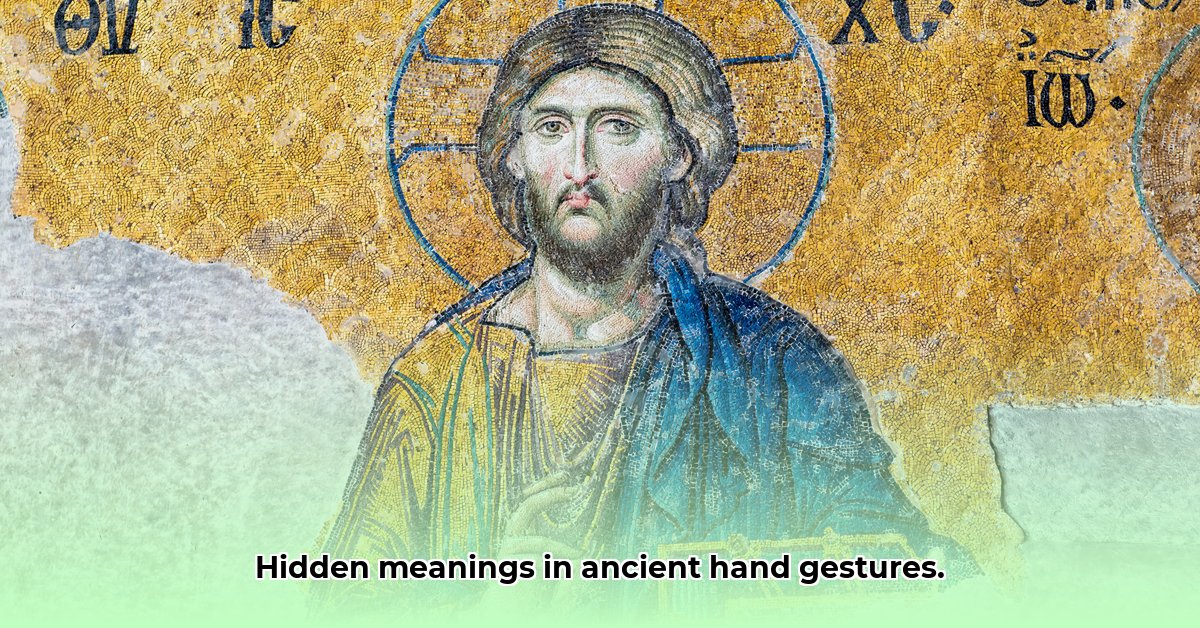
A Silent Language of Faith: Unlocking Ancient Gestures
Ever notice the subtle hand positions in religious paintings? These weren't random; they're a silent language of faith, a visual vocabulary used for centuries to convey profound religious meaning. This article serves as your guide to deciphering this ancient code, exploring the history, significant gestures, and regional variations within Christian art. By understanding this symbolism, you'll gain a deeper appreciation for the artistry and theological richness of religious imagery. Did you know that even slight variations in hand placement can alter the entire meaning of a religious image? For more on Jesus' hand gestures, see this resource.
Tracing the Roots: From Ancient Greece to Christian Icons
Long before Christianity, the Greeks and Romans utilized "chironomia," elaborate hand movements in rhetoric and drama, to emphasize speech and convey meaning. Early Christians cleverly adopted and adapted this system, imbuing it with their own theological interpretations. This ancient communication tool transformed into a powerful symbol of faith, enriching Christian art with a nuanced visual language. How effectively did this ancient communication method translate into a new religious context?
Decoding Key Gestures: A Closer Look
Several key hand gestures appear frequently in Christian art. Let's examine some:
The "IC XC" Gesture: This iconic gesture subtly forms the initial letters of "Jesus Christ" (Ἰησοῦς Χριστός) in Greek, using the fingers. This masterful artistic technique created a visual prayer, a silent testament to faith.
The Three-Finger Blessing: The three raised fingers symbolize the Holy Trinity (Father, Son, Holy Spirit)—a core Christian doctrine. Its simplicity conveys a profound theological concept.
Variations exist, however. Regional styles, artistic license, and evolving theological viewpoints might contribute to these discrepancies. Further research is needed to fully comprehend these distinctions.
The Importance of Context: Reading the Full Story
Interpreting these gestures requires more than just recognizing the hand position; it demands understanding the artwork's broader context and historical setting. Much like reading a story, you need to consider all elements to grasp the complete message. What might be overlooked by focusing solely on the hand gesture?
A Step-by-Step Guide to Interpretation:
Meticulous Observation: Carefully examine the hand gesture itself. What specific pose is used? (e.g., "IC XC," Trinity symbol, or another variation). Paying close attention to minute details is crucial for accurate interpretation.
Analyze the Broader Context: What overall scene is depicted in the artwork? Who are the individuals shown? Their interactions provide vital clues to gesture meaning.
Consider the Artwork's History: Research the painting's age, origin, and artist. Artistic traditions and theological perspectives vary across time and regions.
Seek Expert Opinions: Consult scholarly resources and experts in religious art history for additional insights and different perspectives. Experts can offer valuable insights that enhance your understanding.
Regional and Temporal Variations: A Diverse Visual Language
The depiction of these gestures varies across time and place. Regional artistic traditions, evolving styles, and even artists' personal beliefs contribute to these variations. A Byzantine icon's gesture might differ from a Renaissance painting, reflecting the changing artistic and theological landscapes. How did regional and temporal factors influence the evolution of these symbolic hand gestures?
Ongoing Research: The Conversation Continues
The study of Biblical hand gesture symbolism is ongoing. Scholars continue to investigate, offering nuanced interpretations as new evidence emerges. This field unites art history, religious studies, and cultural analysis, inviting continuous exploration and enriching our understanding of faith's visual representations.
How to Interpret Variations in Jesus' Hand Gestures Across Different Christian Icons
Understanding variations demands a blend of keen observation, historical awareness, and scholarly inquiry. It’s a journey into a rich visual language.
Key Takeaways:
- Ancient Greco-Roman rhetoric heavily influenced early Christian iconography.
- Specific hand gestures hold profound theological significance.
- Regional and temporal variations exist, reflecting diverse artistic schools and interpretations.
- Analyzing hand gestures requires considering the entire artwork’s context.
- Systematic observation paired with historical knowledge enables accurate interpretation.